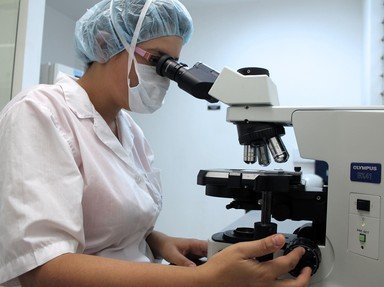Quiz Answer Key and Fun Facts
1. Which of the following devices would allow you to observe not only a living cell, but also the organelles inside?
2. Who came up with the name 'cell' to describe the smallest living biological structure?
3. What is the term for "little organs" within the cell?
4. What are the power generators of the cell called?
5. When a life form has cells which are organized by internal membranes and a cytoskeleton, it is known as which of the following?
6. In what part of the cell does the electron transport chain (ETC) take place?
7. Which of the following does not make up the energy used by cells known as ATP?
8. According to Cell Theory, do all cells come from pre-existing cells?
9. What is one thing that all prokaryotic cells lack?
10. Which of the following is a prokaryotic cell?
Source: Author
longhorngirl
This quiz was reviewed by FunTrivia editor
crisw before going online.
Any errors found in FunTrivia content are routinely corrected through our feedback system.


